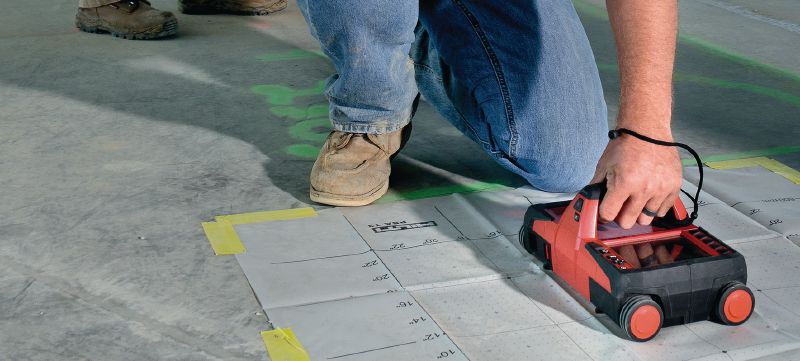Nationwide RainierGPR Service Areas for Advanced Concrete Scanning
Nationwide RainierGPR Service Areas for Advanced Concrete Scanning
Blog Article
Enhancing Project Preparation and Execution Through Advanced Concrete Scanning Methods
In the realm of task planning and precision, implementation and foresight are essential aspects that can make the difference between success and troubles. Advanced concrete scanning methods have actually become an innovative tool readied to raise the criteria of project monitoring within the construction market. By harnessing advanced modern technology, these techniques use a glimpse into the architectural honesty of a building even prior to the initial brick is laid. The ramifications of such improvements are extensive, promising a paradigm change in how projects are come close to and supplied.
Benefits of Advanced Concrete Scanning Techniques

Improved Accuracy in Project Assessments
Enhancing project analyses via sophisticated concrete scanning techniques considerably increases the precision and integrity of building and construction examinations. By utilizing advanced scanning technologies such as ground-penetrating radar (GPR) and 3D imaging, task groups can now obtain thorough understandings into the problem of concrete frameworks, identifying possible problems or weaknesses that might not show up to the nude eye. This improved level of precision in job assessments makes it possible for building professionals to make even more informed choices relating to repair and upkeep techniques, leading to boosted overall task results.
In addition, the boosted accuracy in job analyses accomplished via sophisticated concrete scanning strategies helps in minimizing the threat of unexpected concerns throughout the building stage. By proactively finding hidden anomalies within concrete structures, such as rebar corrosion or gaps, task groups can resolve these issues early, staying clear of pricey hold-ups and rework later on in the task lifecycle. Inevitably, the boosted precision in project evaluations helped with by innovative concrete scanning techniques adds to better efficiency, cost-effectiveness, and high quality in building and construction tasks.
Very Early Identification of Structural Obstacles
Early discovery of structural difficulties plays a crucial role in guaranteeing the stability and security of concrete frameworks throughout the construction process. Identifying potential issues at a beginning enables timely intervention, preventing costly rework, timetable delays, and security dangers. Advanced concrete scanning strategies, such as ground-penetrating radar (GPR) and 3D imaging, make it possible for task groups to reveal covert flaws, spaces, reinforcement layout discrepancies, and various other abnormalities that might jeopardize the structure's stability.
By implementing these strategies during the planning and implementation stages, building experts can proactively deal with structural difficulties before they escalate right into major problems. For instance, detecting insufficient concrete cover over support bars early can prevent deterioration and structural weakening in the lengthy run - RainierGPR Service Areas. In addition, recognizing variations in concrete thickness or thickness can aid enhance product usage and guarantee consistent toughness Check This Out residential or commercial properties throughout the framework

Eventually, early recognition of structural difficulties via sophisticated concrete scanning not only improves the overall high quality and resilience of the construction but additionally adds to a more secure built setting for residents and individuals.
Boosted Safety Actions in Construction
The implementation of durable security methods is crucial in the construction industry to alleviate dangers and guard the well-being of workers and stakeholders. Building and construction sites are naturally hazardous atmospheres, with prospective dangers varying from drops and devices breakdowns to architectural failings. To boost safety steps, building and construction business are progressively embracing technical innovations such as wearable tools that monitor employees' essential indicators and detect potential health issues in real-time. Additionally, making use of drones for website security permits for normal safety and security examinations without putting personnel in harm's means. Safety and security training programs have actually likewise progressed to consist of digital fact simulations that supply hands-on experience in taking care of emergency situation circumstances. Furthermore, the combination of expert system in safety monitoring systems makes it possible for positive recognition of prospective risks, enabling prompt interventions. By prioritizing safety and security via the unification of sophisticated technologies and comprehensive training programs, building and construction jobs can considerably decrease accidents and produce a protected workplace for all involved - RainierGPR Service Areas.
Streamlining Task Monitoring Processes
To optimize operational effectiveness and ensure job success in the building and construction sector, a focus on streamlining project administration procedures is essential. By executing effective job administration processes, building tasks can minimize delays, reduce costs, and boost total performance. One essential element of streamlining project management is making use of innovative modern technologies such as Building Information Modeling (BIM) software, which enables real-time cooperation, clash discovery, and precise job organizing. Furthermore, the adoption of cloud-based task monitoring platforms allows for seamless communication amongst employee, instant accessibility to job information, and the capability to track progress in real-time.

Verdict
Finally, the utilization of advanced concrete scanning techniques provides various advantages for task preparation and implementation. These methods supply enhanced precision in job evaluations, very early recognition of structural challenges, boosted precaution in building and construction, and structured task administration processes. Integrating these methods into project workflows can ultimately bring about extra efficient and successful outcomes in construction tasks.
Inevitably, the enhanced precision in job assessments facilitated by innovative concrete scanning methods contributes to better performance, cost-effectiveness, and top quality in building tasks. RainierGPR Service Areas.
To optimize functional efficiency and make certain job success in the building sector, a focus on streamlining task management procedures is necessary. By applying reliable Source task management processes, construction tasks can minimize delays, lower expenses, and boost overall efficiency. By improving job management processes via technology assimilation, clear communication, and data-driven methods, building and construction projects can attain better efficiency, cost-effectiveness, and effective end results.
These techniques offer better precision in project evaluations, very early recognition of structural challenges, improved safety and security measures in construction, and streamlined job monitoring procedures.
Report this page